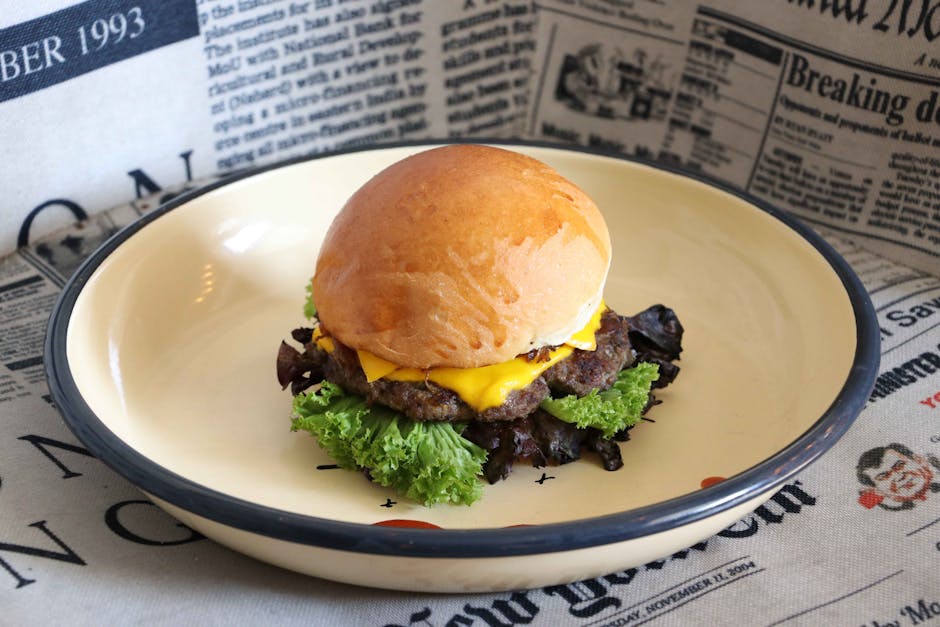Americans love their cheese, especially when it comes to the processed, creamy, and flavorful variety known as American cheese. But a common question among cheese lovers is, how long can American cheese last? The answer largely depends on proper storage methods and favorable conditions that can extend its shelf life while maintaining its qualities.
The Basics of American Cheese Shelf Life
Understanding the shelf life of American cheese starts with proper storage and awareness of how external elements can impact its freshness over time. The longevity of American cheese can be affected by factors such as air exposure, temperature, and humidity. If stored properly – sealed in an air-tight container and refrigerated – American cheese could last up to three to four weeks past its expiration date.
This shelf life can be assessed through the cheese’s physical changes. The signs of freshness include a vibrant, yellow-orange color, smooth texture, and a mild, creamy flavor. If the cheese appears dry, has darkened spots, or emits an unusual odor, it’s likely time to discard it.
Best Practice for Storing American Cheese
- Keep the cheese sealed in an airtight container or wrap it tightly in plastic wrap.
- Store it in the coolest part of the refrigerator.
- Use a cheese marker or label to note the date of opening.
The Impact of Storage Conditions on American Cheese
Amongst various contributing factors, temperature and humidity play significant roles in maintaining the freshness of American cheese. Cooling slows down the bacterial growth that leads to spoilage, which makes the refrigerator an ideal place to store this cheese.
Comparison: Refrigerator vs. Pantry
| Refrigerator | Pantry |
|---|---|
| Helps slow down the aging process and bacterial growth | Subject to quicker spoilage due to warmer temperatures leading to accelerated bacterial growth |
| Can extend shelf life up to three to four weeks past the expiration date when stored properly | Can rapidly decrease shelf life, making cheese suitable for only a few hours to days |
Pro Tip: Maintain a consistent fridge temperature, ideally below 40 degrees Fahrenheit (5 degrees Celsius), to ensure the longevity of your American cheese.
Freezing American Cheese: A Feasible Option?
To further extend the shelf life of American cheese, some may consider freezing as an option. While it drastically slows down bacterial growth, freezing can alter the texture and taste of the cheese. Upon thawing, the cheese may become crumbly and lose some of its creaminess.
Pros and Cons of Freezing American Cheese
- Pros: Extends shelf life for many months, slows down bacterial growth.
- Cons: Can change taste and texture, thawed cheese might become crumbly.
Best Practice: When using frozen American cheese, consider melting it in cooking recipes to avoid possible texture changes after thawing.
Signs of Spoiled American Cheese and Health Risks
It’s essential to identify the signs of spoiled American cheese, as consumption of spoiled food, in general, poses potential health risks. Signs typically revolve around changes in color, texture, and smell. Fresh American cheese possesses a bright, uniform yellow-orange hue, a smooth texture, and a mild, creamy scent. As the cheese begins to spoil, it may darken or develop spots, become excessively dry or slimy, and omit an unpleasant odor reminiscent of sour milk or yeast.
Signs of Spoilage in American Cheese:
- Darken color or presence of dark spots.
- Dry or slimy texture.
- A strong, unpleasant odor.
- Presence of mold.
Pro Tip: Always trust your senses when determining the freshness of your American cheese. If in doubt, it’s better to toss the cheese to avoid potential health risks associated with spoiled food.
The Science Behind American Cheese Preservation
American cheese’s shelf life is primarily due to its unique manufacturing process, where pasteurization and the addition of preservatives slow down bacterial growth, thus extending its shelf life. Pasteurization involves heating the milk to kill bacteria, while preservatives inhibit the growth of bacteria, yeast, and molds.
The high processing level, combined with proper storage methods, can help American cheese to maintain its freshness and flavor for an extended period.
Best Practice to Maximize Shelf Life:
- Store cheese in the fridge immediately after purchase.
- Maintain a constant, cool fridge temperature.
- Always ensure to seal or wrap the cheese to minimize exposure to air.
- Consume cheese within three to four weeks after its opening to enjoy its optimal taste and prevent spoilage.
Thus, effectively storing American cheese and being aware of its freshness can make a significant difference in prolonging its shelf life, maintaining its taste, and ensuring your safety and well-being.
Key Takeaway:
- The shelf life of American cheese largely depends on its storage conditions and the method of storage. A properly sealed and refrigerated cheese can last up to three to four weeks past its expiration date.
- Temperature and humidity greatly influence the freshness and longevity of American cheese, with the refrigerator offering ideal conditions.
- Freezing extends the shelf life drastically but can alter the cheese’s texture and taste.
- Understanding the signs of spoiled cheese such as color, smell and texture changes is crucial to avoid health risks associated with spoiled food.
- The pasteurization process and the addition of preservatives during the manufacturing of American cheese contribute to its extended shelf life.
Proper storage of American cheese and a keen understanding of its freshness ensures the longevity of the cheese and safety when consuming it. With careful observation and optimal storage conditions, you can enjoy the creamy goodness of American cheese for a longer time without worry.
FAQs
Q: How should I store American cheese slices that come individually packaged?
A: American cheese slices that come individually wrapped should be stored in their original packaging until you’re ready to use them. After opening, it’s best to use these slices immediately for optimal freshness.
Q: Can I speed up the ripening process of American cheese if I want a stronger flavour?
A: American cheese is a processed cheese product that doesn’t mature or get stronger in flavor with age like natural cheeses do. It’s best consumed fresh for peak flavor and quality.
Q: Can I eat American cheese past its expiry date if it doesn’t show signs of spoilage?
A: While it is possible for American cheese to last beyond its expiration date with proper storage, it’s essential to check for spoilage signs before consuming it. If in doubt, it’s safest to discard it.
Q: Are there any specific containers that work best for storing American cheese?
A: An airtight plastic container or a cheese bag can work well for storing American cheese. Make sure the container or bag is properly sealed to prevent air exposure and excess moisture.
Q: Can I refreeze American cheese if I’ve defrosted more than I need?
A: It’s generally not recommended to refreeze any type of cheese once it’s been thawed due to potential texture and taste changes.
Explore more informative posts on our website and don’t hesitate to share this article with your fellow cheese lovers. Enjoy your cheese in the best way possible!






